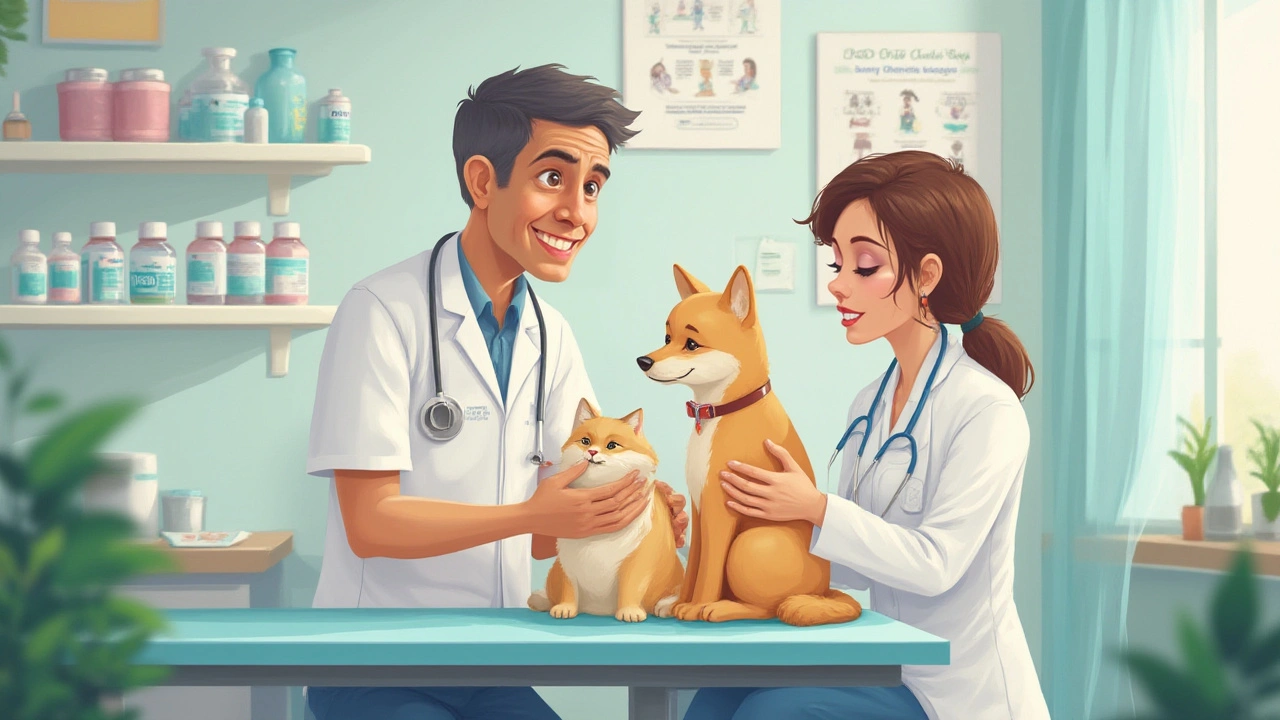Ampicillin for Pets: What You Need to Know
Ever wondered if the same antibiotic you see at the doctor’s office can help your dog or cat? Ampicillin is a common pet antibiotic that vets use for bacterial infections. It works fast, but you need to follow the right steps to keep your furry friend safe.
When to Use Ampicillin in Dogs and Cats
Vets usually prescribe ampicillin for skin wounds, urinary tract infections, respiratory infections, and after surgery to prevent infection. If your pet shows signs like swelling, pus, fever, or a persistent cough, the vet might suggest ampicillin. It’s not for viral illnesses, so a proper diagnosis matters.
Dosage, Administration & Safety Tips
The dose depends on your pet’s weight and the infection’s severity. A typical range is 10‑20 mg per kilogram of body weight, given every 12 hours. For a 20‑lb (9 kg) dog, that’s roughly 90‑180 mg per dose. For a 10‑lb (4.5 kg) cat, it’s about 45‑90 mg per dose. Always double‑check the exact amount on the prescription label.
Most ampicillin comes as tablets or a liquid suspension. If you have tablets, you can crush them and mix with a small amount of wet food, but make sure the whole dose is eaten. The liquid form is easier to measure with a syringe; give it directly into the cheek to avoid spillage.
Store ampicillin at room temperature, away from moisture and heat. If you have a liquid suspension, shake the bottle well before each use and check the expiration date. Throw away any leftover medicine after the recommended period.
Watch for side effects like vomiting, diarrhea, loss of appetite, or skin rash. Mild stomach upset is common, but severe symptoms such as persistent vomiting, bloody stool, or difficulty breathing need immediate vet attention.
If your pet feels better after a few days, don’t stop the medication early. Incomplete courses can let bacteria survive and become resistant. Finish the entire prescription unless the vet tells you otherwise.
When you’re unsure about the dose or how to give the medicine, call the clinic. Vets can walk you through the calculation and show you the best way to administer it.
In summary, ampicillin can be a lifesaver for bacterial infections in dogs and cats when used correctly. Know the right dose, give it consistently, watch for side effects, and keep the vet in the loop. That’s the best recipe for a fast, safe recovery.
